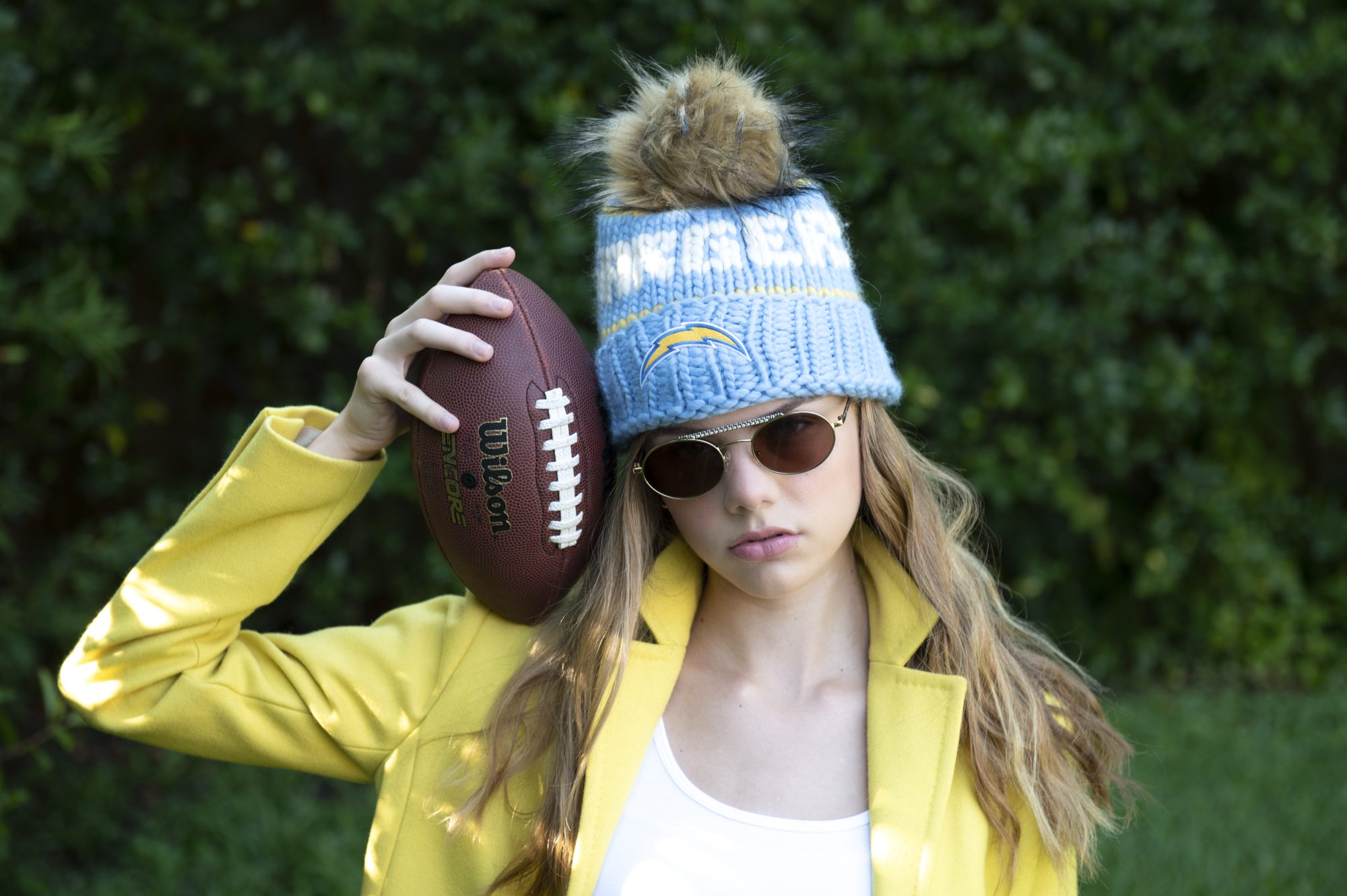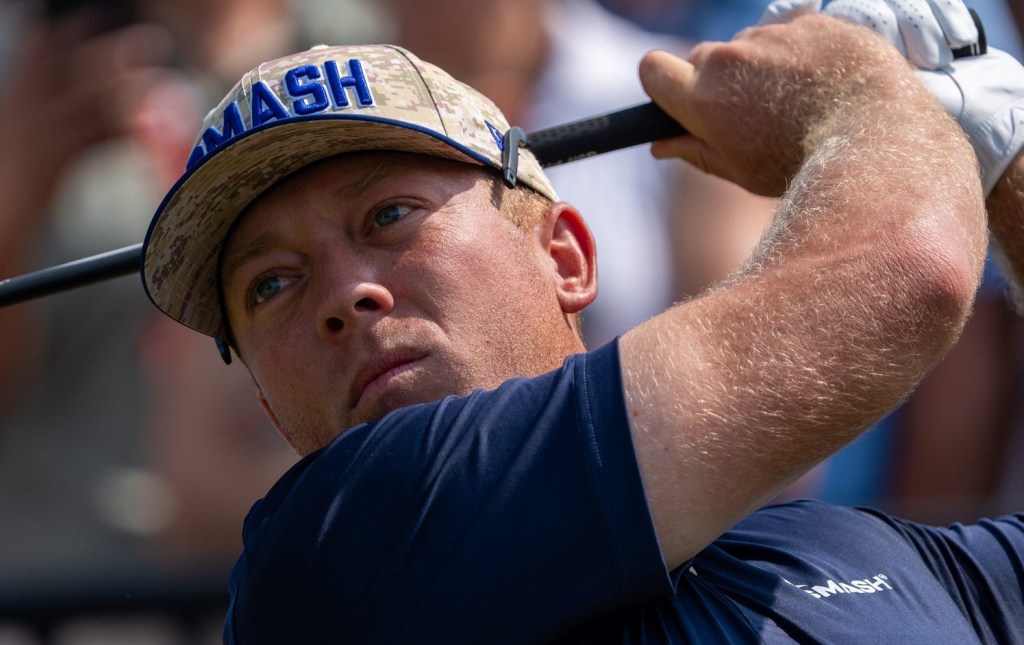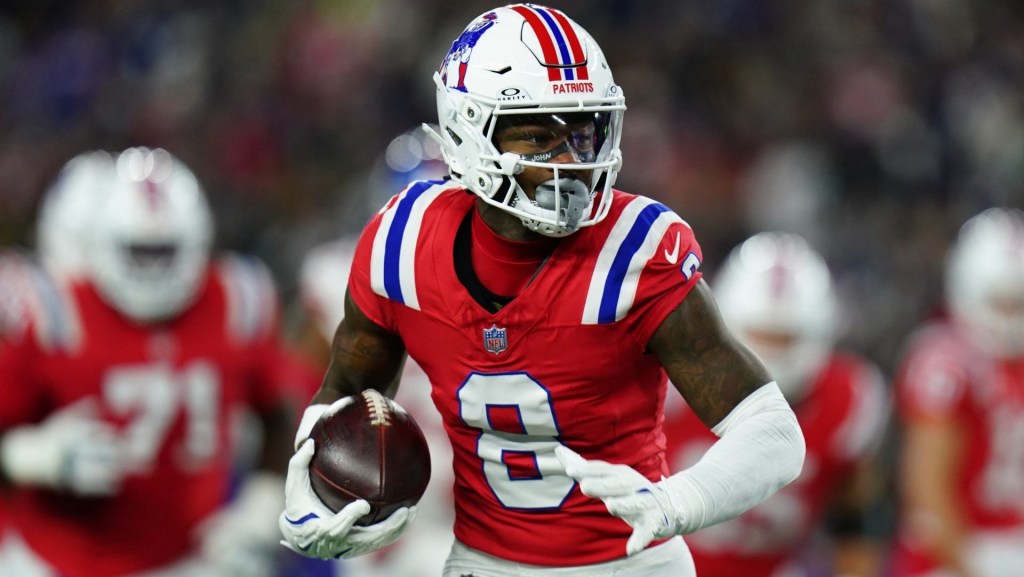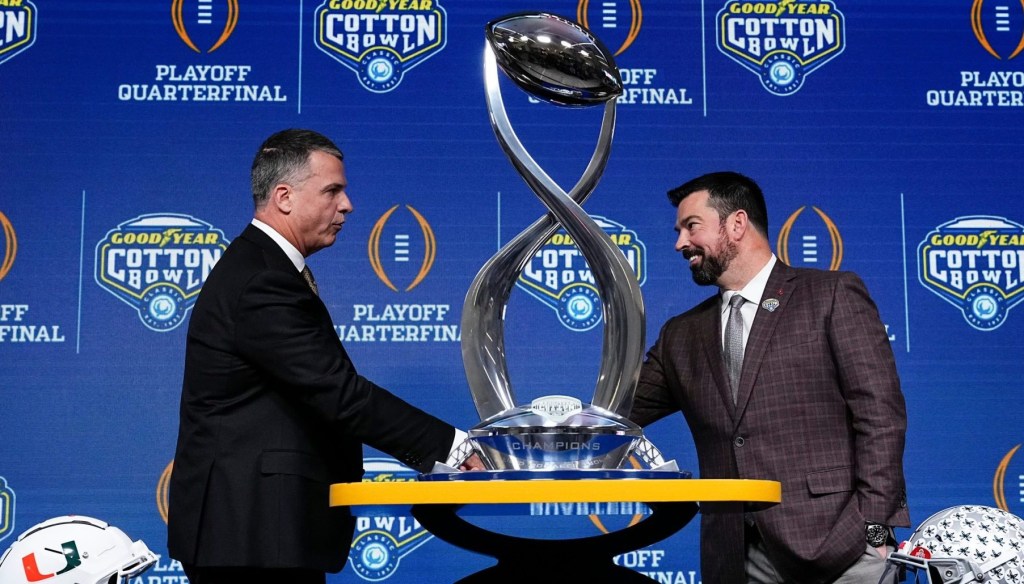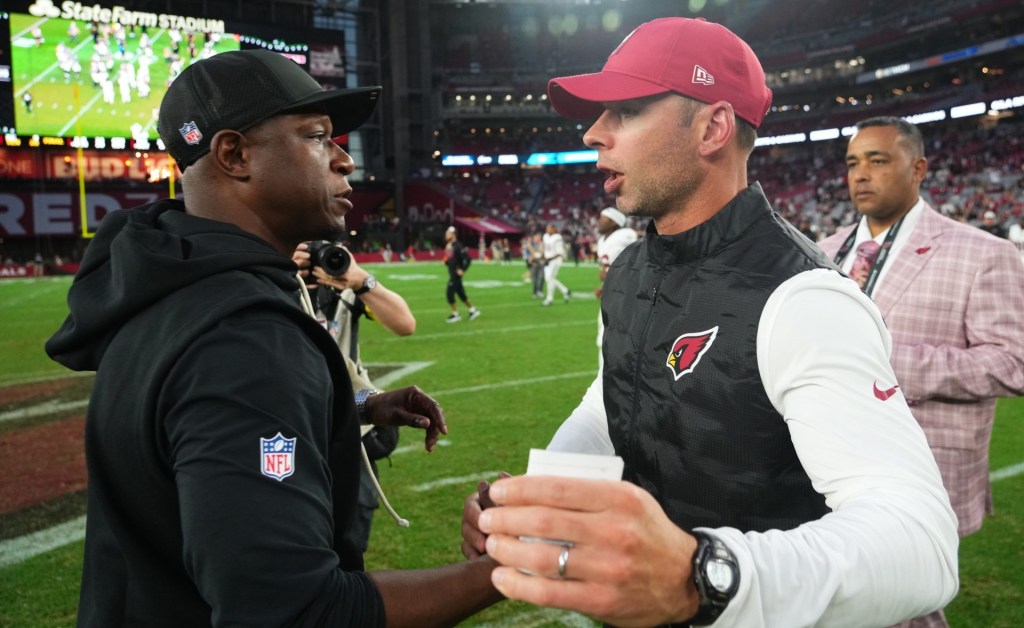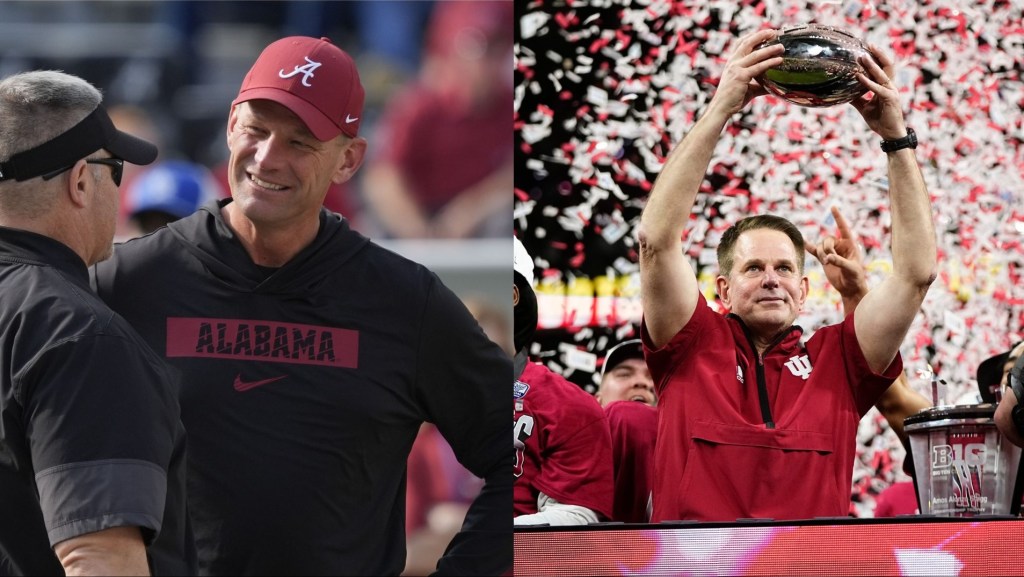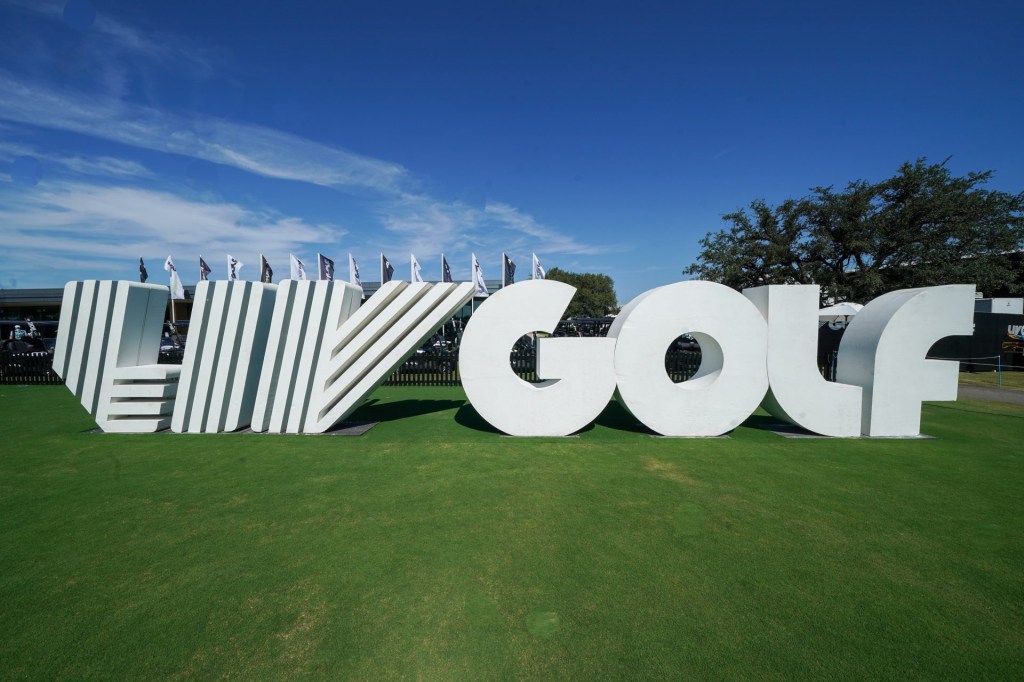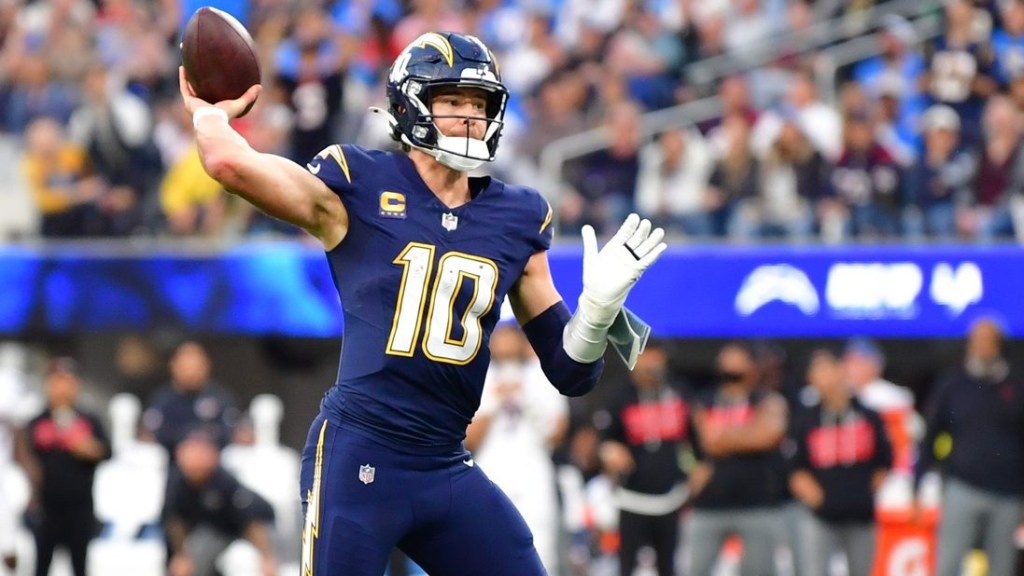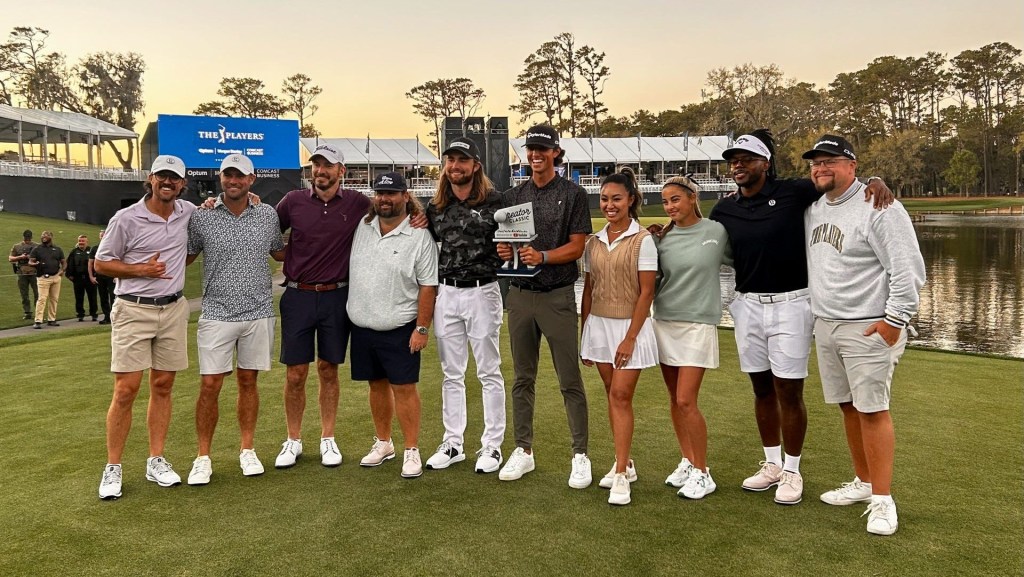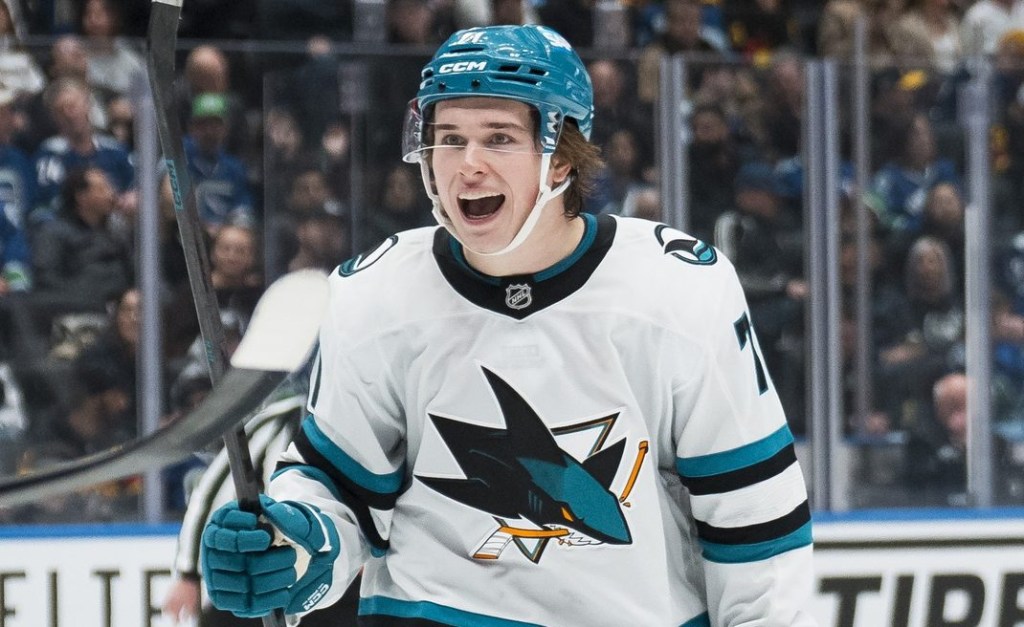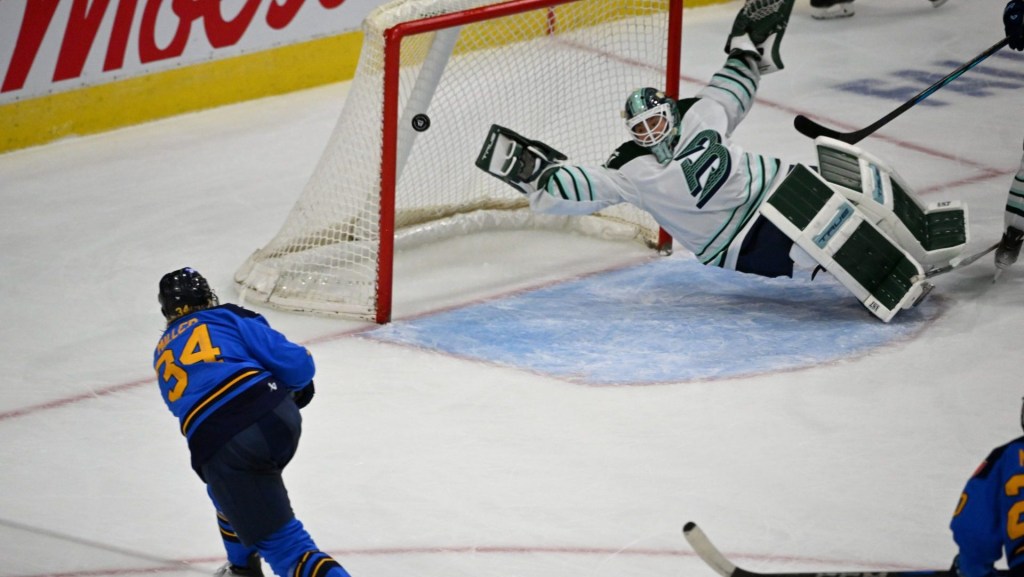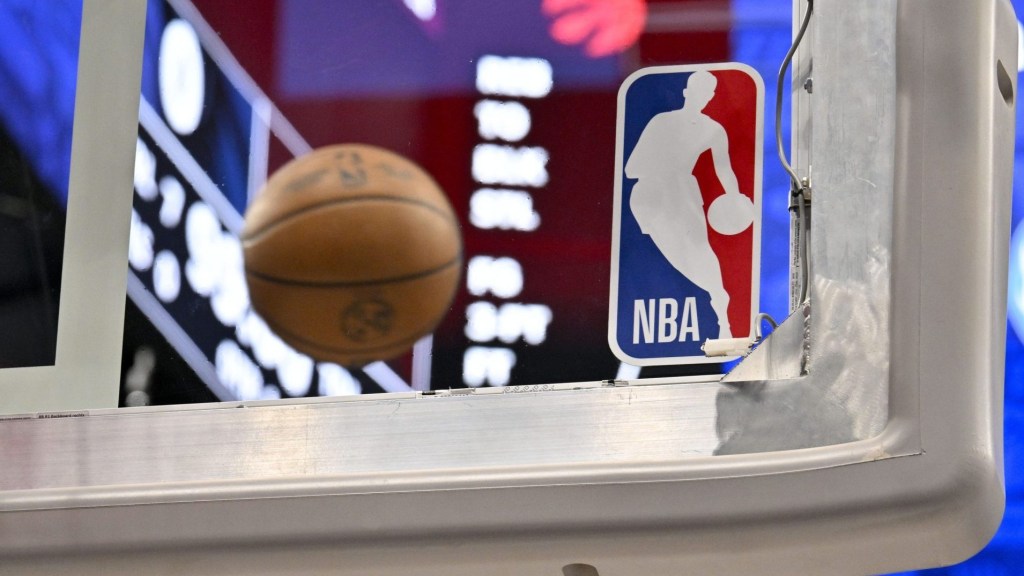At a January 2024 Chiefs game, Taylor Swift wore a custom jacket made by Kristin Juszczyk, the wife of 49ers fullback Kyle Juszczyk. Images of the garment—a mid-length red puffer with a white quilted lining and the name and number of Swift’s boyfriend, tight end Travis Kelce—kicked up a frenzy on social media. Tagged by Swiftie style accounts and @NFL alike, Juszczyk gained nearly 400,000 Instagram followers in a matter of days.
Swift “single-handedly” transformed Juszczyk’s career that day, the designer told Page Six in October. While she had previously made plenty of custom pieces for herself and other famous fans, she said, “It just completely changed the trajectory of everything that I was doing. She opened up so many doors for me.”
Swift made one appearance in Juszczyk’s designs, but by the Super Bowl, Juszczyk had hit a million followers. Not only was her brand profile spiking, but the NFL also capitalized, making quick work to ink an official licensing deal, opening a path to major-brand partnerships (she has since worked with Levi’s and Gatorade).
“Last year really turned into this powder keg moment for her where [her work] started to explode online, and then to be able to then extend that with the licensing deal that we have, it just works out for everybody,” Ian Trombetta, the NFL’s SVP of social, influencer, and content marketing, tells Front Office Sports. He credits the league’s consumer products team for seizing the opportunity—and suggests there’s likely more to come.
Swifties are loving the jacket, @krisjuszczyk. 👏@taylorswift13 | @JuiceCheck44 pic.twitter.com/twWMSodd3V
— NFL (@NFL) January 14, 2024
The past year has provided strong evidence for a Taylor Swift economic effect. Her 2023–2024 Eras Tour stops have generated billions in spending—more than the GDPs of many countries. And now that she has cemented her NFL presence, the football world is likewise feeling her impact. Where Swift goes, money follows. After she wore gold “glitter freckles” by the indie brand Fazit Beauty to an October Chiefs game, the company sold more than $1 million worth of the product in 48 hours.
It’s increasingly clear that female fans—whether they are lifelong diehards or found their way to football through Swift last season—are a major force that remain largely untapped in the NFL sphere. They are willing to spend. And now that the league and the brands it works with are beginning to serve them better, they are.
Even before Swift, the female audience for the NFL had been growing for years. Women currently make up 46% of the total fan base, according to the league. They have been the key demographic driving the NFL’s growth for well over a decade.
For the Chiefs specifically, women already accounted for more than half of the team’s fan base before Swift’s arrival, but in the past year, that number has risen to 57%, says Lara Krug, the team’s EVP and chief media and marketing officer. That reality “opens up our minds on the business side … in terms of the brand, in terms of events, in terms of merchandise opportunities, partnerships.” The team is now focused on connecting with its growing audience that includes young women and millennial mothers.
It isn’t that the NFL hasn’t previously acknowledged this fan base, but its attempts to reach them have often fallen short, or even felt like a token gesture.
Past overtures have included a controversial annual breast cancer awareness campaign that swathed stadiums, players, and fans in pink gear (including women’s apparel) for the month of October; educational initiatives offering beginner-level football terminology and “game-day style tips”; and a collection of apparel and accessories designed for women, which launched to much fanfare in 2010. Of course, by the time the latter debuted, tens of millions of female fans were already watching the sport, often in men’s or youth jerseys.
Lately, though, Swift has helped spotlight the void. Her presence has expedited strategies already underway to engage with female fans and woken up other companies to the massive revenue potential of this underserved market.
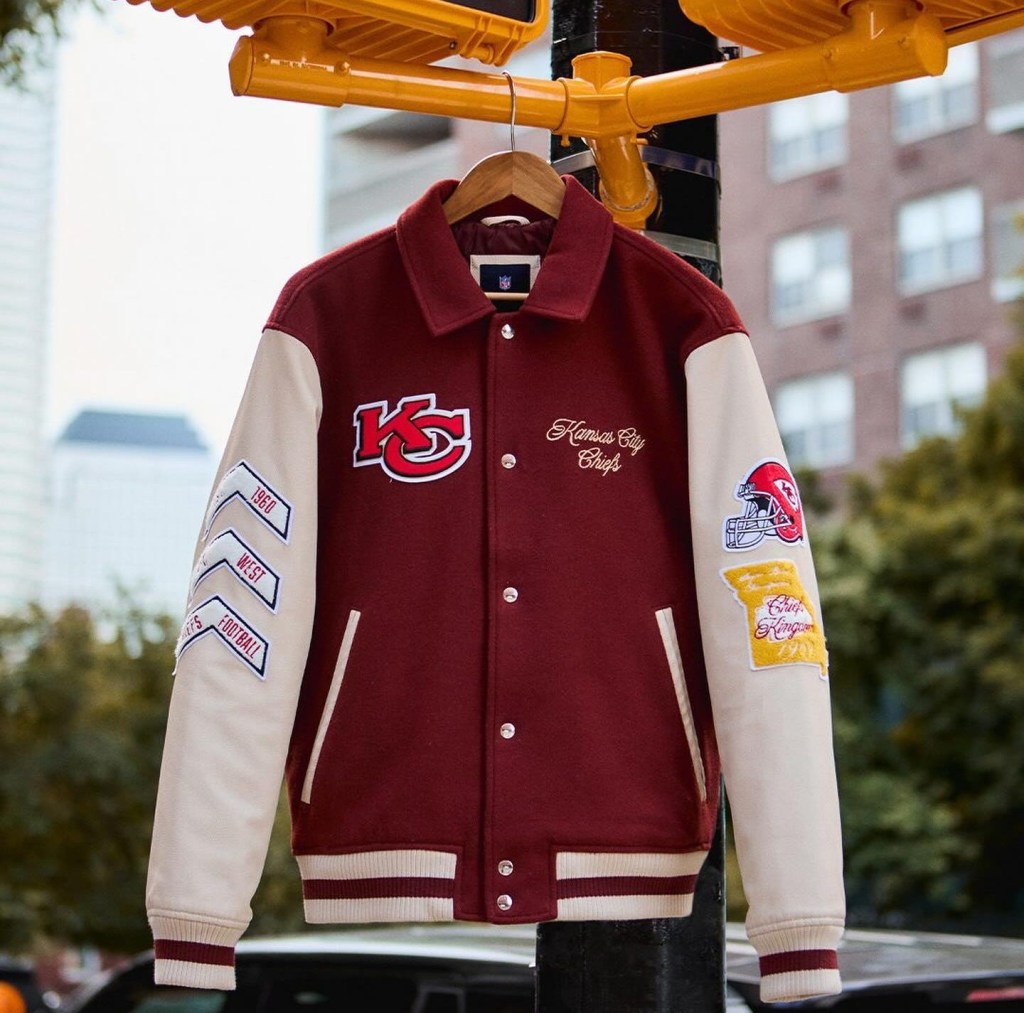
The NFL itself is playing a big part in meeting demand.
In the past couple of years, the league has expanded its licensing partnerships with existing brands and independent designers that have largely female consumer bases. While these collaborations represent a tiny share of the estimated $2.75 billion the NFL generates in retail sales of licensed consumer products every year, they play an important role in a licensor’s long-term growth, says Amanda Cioletti, VP of content and strategy at License Global, a leading industry publication. “The aim is always going to be generating new fans and pulling in new audiences,” she tells FOS. “You add in a demographic that has more disposable income, and you’ve got another gold mine to tap into.”
Designer Lele Sadoughi, known for her pearl- and crystal-bedecked headbands, recently launched a full lineup of officially licensed NFL beanies and hair accessories adorned with embroidered logos, team names, and helmet charms—a project nearly two years in the making. The brand’s fashion-focused wholesale accounts, including high-end retailers like Saks Fifth Avenue and Neiman Marcus, local boutiques, and Amazon-owned Shopbop have all been excited about the collection, she says, with Shopbop making the first major buy.
“We got a call from them probably six months ago saying, ‘We love that you’re doing all the sports. We have a directive from the top to buy into this. What else do you have? What licenses do you have? We need them all,’” recalls Sadoughi. (Shopbop has also hosted a pop-up at MetLife Stadium and promoted its game-day collection heavily across platforms; it is also dressing Amazon’s Thursday Night Football broadcast team.)
Women-focused brands that existed before Swift’s football mania are also seeing the lift. Erin Andrews, who launched officially licensed brand WEAR in 2019, connected with Swift in 2023. Swift wore one of the collection’s Chiefs-themed windbreakers in September of that year. The product quickly sold out online. Abercrombie & Fitch also expanded its licensed NFL collection significantly this year to meet customer demand, says chief product officer Corey Robinson. It debuted knits and outerwear for men and women (though customers shop across the full range, he adds).
Other fandom-inspired changes are providing a revenue opportunity. Bag company Stoney Clover Lane added Stadium Styles: see-through carryalls for easy entry into venues. Clear fanny packs run $108; a clear crossbody bag, retailing for $118, was sold out as of this writing. The company has since secured official licenses with the NFL, offering fans the chance to customize bags and pouches with team patches, and its stadium bags have been picked up by Shopbop and Fanatics, in which the NFL is a major investor. (Stoney Clover Lane declined to provide revenue figures to FOS.)
Krug says the past year has unlocked conversations with a wide range of brands that haven’t worked with the NFL in the past, many of them geared toward predominantly female audiences and consumers. While she declined to give specific names, she said companies are recognizing the power of the Chiefs as a brand with a huge, passionate audience and distinctive values: “Community, family, the kind of feel-good, magic feeling that lives within sport, and that feeling of being part of something bigger than yourself.”
There are other open doors, too. This holiday season will bring several major media crossovers between the NFL and Swift’s brand. On the Saturday of Thanksgiving weekend—just after the Chiefs’ Black Friday game on Amazon—Hallmark Channel will air Holiday Touchdown: A Chiefs Love Story. It’s a first-of-its-kind original movie produced in collaboration with the Chiefs and the NFL’s joint-venture content studio Skydance Sports.
Although the plot doesn’t involve a charming tight end wooing a recently heartbroken superstar, Hallmark has undoubtedly leaned in to the association with the team’s superstar couple in its promotional strategy. The movie’s save-the-date poster features a blond woman snuggling up to a bearded brunette man on the field in Arrowhead Stadium, and the channel announced the partnership with a caption referencing Swift’s lyrics (“Are you ready for it?”). Plus, Donna Kelce—Travis’s mom—has a cameo.
“It was a perfect love story between our two organizations to do something that has never been done before,” says the Chiefs’ Krug. And, true to the team’s demographics, it’s the female lead who plays the Chiefs superfan.
At the Chiefs home game on Nov. 29, the day before the premiere, Hallmark—which is also based in Kansas City—will host pop-ups, giveaways, and tailgate activations at the stadium, and outfit the broadcast suite with lapel pins that nod to an accessory featured in the film. Thanks to its production partners, Holiday Touchdown had a bigger budget than most of the channel’s ultra-popular holiday lineup, with scenes shot in the stadium and a red-carpet premiere. And the prime holiday weekend time slot makes it a shoo-in to garner millions of viewers.
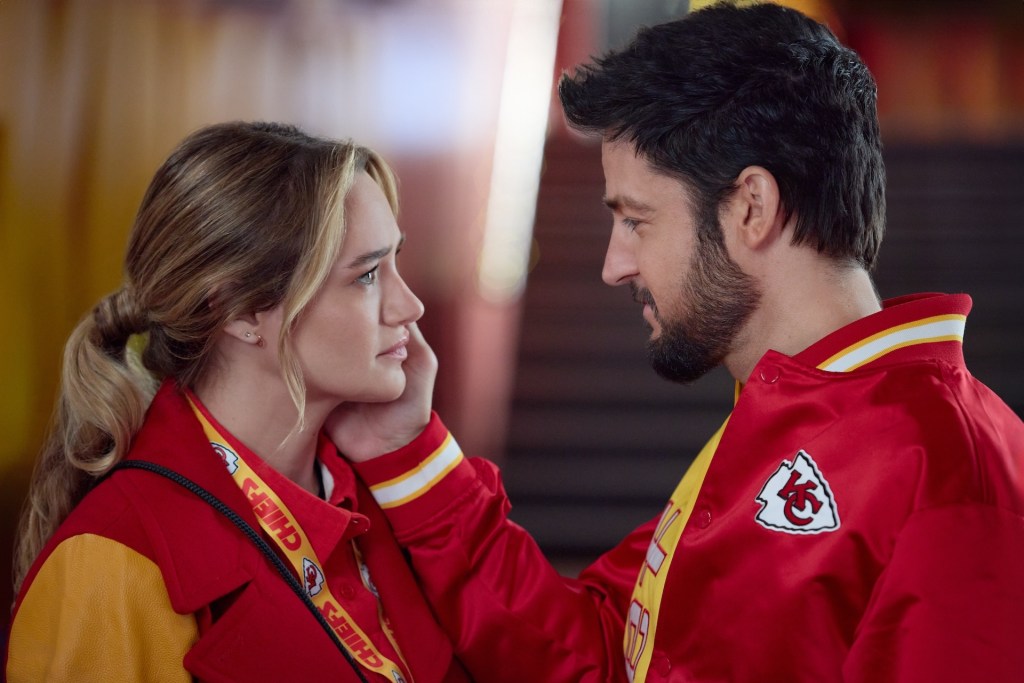
The advertising opportunity is significant, especially given that the Hallmark Channel regularly ranks above news programs and below only the NFL in popularity during the holiday season. “[Hallmark knows] exactly who their audience is and how to program to them and deliver really good value for their advertisers,” says Kevin Krim, president and CEO of ad-measurement company EDO. “If you’re an advertiser trying to reach that audience, you’d be crazy not to give it a shot.”
For its part, Amazon has sold out of ad inventory for the Black Friday game, with 40% of advertisers new to the platform, the company recently told Adweek. With its e-commerce capabilities, the streamer is able to offer shoppable video ads that let viewers add products directly to cart during a broadcast, and brands including JCPenney and Dyson have already bought in big to Thursday Night Football. An ad that airs during an NFL game delivers 36 times more engagement than the average prime-time ad, according to EDO.
The longtail of Swift’s business effect is still a question, even to the NFL. For the first Chiefs game she attended in September 2023, Trombetta says, “We got an inkling that she was going to be there, and of course, we knew that would set the internet on fire. We certainly didn’t know how long that would sustain itself.”
The initial frenzy may have died down (the NFL’s X/Twitter account no longer has Swift’s reaction shots as its header photo, for one), but the relationship between America’s biggest sports league and its biggest pop star has only become more symbiotic. In late October, as the Chiefs squared off against the 49ers, millions of TV viewers heard a carefully chosen song as the game cut to commercial break: “Bad Blood” from Swift’s 1989 album. They likely also caught the ad spot for her forthcoming Target-exclusive Eras Tour book and vinyl release, and the promo earlier in the day referencing Kelce’s “cat lady” girlfriend.
Swift was busy in Miami playing another sold-out night of her record-breaking tour, but Fox didn’t miss the opportunity to make her part of the broadcast. Meanwhile, as Swifties filed into Hard Rock Stadium, they were greeted with screens playing Sunday Night Football, so fans could watch the singer’s boyfriend defeat his team’s Super Bowl rivals yet again. “Karma is the guy on the Chiefs coming straight home to me,” Swift sang in the final song of the night, swapping out a lyric in a winking shout-out.
Nancy Lough, a professor of sports marketing at UNLV, sees the opportunity to serve female football fans—and cash in—as a “no-brainer in my mind.” There’s plenty more space for growth, especially for the NFL itself—and has been for a while. At a convention about a decade ago, she spotted a line of purses inspired by the NFL teams. She was impressed with the idea—and struck by the fact that the league itself wasn’t making something similar.
“If [the NFL] really cared about the female fan, they’d be making boatloads of money,” she says. “There’s money being left on the table.”
